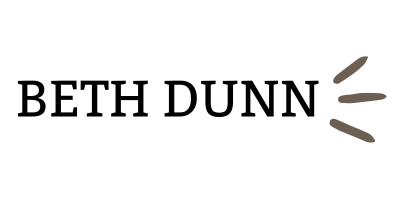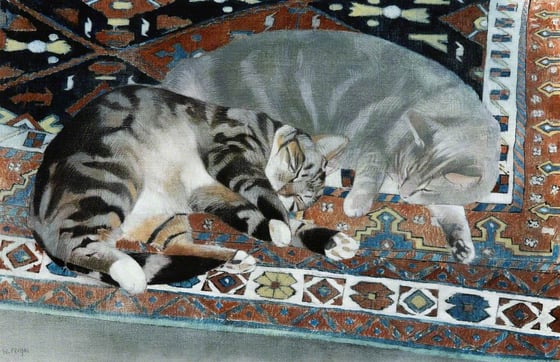VM8: Let It Go
The Week Ahead
If you could delete just one thing from your life, what would it be? The late-night social media scroll? Half of your meetings? All of your worry about stuff you can't control? What if I told you there was never a better week for waving your own magic wand, muttering an incantation of your own devising, and letting something that just isn't cool for you anymore fade out of your life? What will you have room for, once that smoke has cleared?

What if we just took it out?
The designer paused. I could see her rifling through her mental list of reasons for why we needed this thing. I wasn’t so sure. And I could tell she wasn't, either.
Do we have any real data that says people are confused at this point? That they need a tour of the feature before diving in? How will rewording it help them, exactly?
We’ve all been there before, right? We’re asked to fix something, update it, freshen it up. But how often do we feel we can question the need for it at all?
What if we just took it out?
In this case, I was consulting with a small product team on a voice refresh. They had an old onboarding tour that wasn’t getting much traction, even though the tool itself was universally loved. Our brief was to revise the tour based on some new voice and tone guidance. Give it a glow-up. You know the drill.
But voice and tone isn’t just what you say, or even how you say it. It's about what you do.
I like to think about voice — brand voice, product voice, company voice — as your character, in the old, 19th century novel sort of way. It's your backbone, your spine. The values (or vices) people think of when they hear your name.
We talk a lot in fiction about how character drives plot. That's what I think your voice should do, too. Voice should drive action.
I know! It's not traditionally how we think about brand or product voice. But I think we get that backwards, honestly. We think about voice as just being about how we make things sound. When if we're being honest about how voice works, it's why we do what we do.
Values > Voice > Action
We tend to wrap up our voice attributes as a short list of adjectives. Then we go on to explain what they'll mean in action.
Because we are human, we'll use contractions where we can.
Because we are helpful, we'll use plain language that's inclusive and accessible to all.
Because we are kind, we'll write error messages that assume the fault is likely ours, not the user's.
That sort of thing.
But those guidelines focus on what we'll say and how we'll say it, not so much what we'll do. I'd love to dig deeper in the dirt, to really talk about how who we think we are should drive what we do.
If character drives plot, then who you are decides what happens next. Whether you're driving the action, or just reacting to stuff, you act according to your character, to who you are, deep inside.
In the case of this onboarding tour, the designer and I asked ourselves what our voice said we might do. Not just what we might say, or how we might say it. But what would we do?
Our voice guidelines allowed us to honestly ask, Is this trip really necessary?
People talk a lot in content design about how they can become more strategic. I think it starts in conversations like these. When we take a step back and focus less on what we write and how we write it, and ask if we should be writing it at all. And if so, when? Why?
Who do you think you are?
Voice and tone guidelines aren’t just about word choice or phrasing. They’re about who we are and how we'll behave. Voice is about ethics, accessibility, security, and safety. Honorable behavior, if that's not asking too much.
Voice is how we express our values, how those values will drive what we do. It's not some pretty way of packaging up or papering over what we’ve already done.
Of course voice should guide us as we decide all these things. What will we build? Where will we invest our time? What will we focus on next? And who better to ask those questions than those who know that voice best?
That's right: You.
As content people, we are the authors of our character's voice. We're perfectly placed to be able to question all those unspoken assumptions behind how we behave. It's not just what we say. It's what we do.
Is this thing even necessary?
What if we just took it out?
What if we did this in a new way?
What if...? What about...?
That's all. This week I just wanted to remind you that you have the power to ask those kinds of questions. Before you apply your brilliance to word choice and phrasing, fascinating (and important) though those things may be.
You have the power. What will you do?

Now Reading
Uproar: Satire, Scandal, and Printmaking in Georgian London
by Alice Loxton
Alice Loxton is a young, funny, oddball sort of historian, ubiquitous on history Tiktok and in my Youtube feed, and her new book is about the rise of satirists in Georgian England and how they changed their world during a pivotal time. I'll leave it to you to decide why I think a bunch of irreverent artists poking fun at those in power might be interesting to the wild bunch of writers and creative folks who read this newsletter. I will leave it to you.
Now Watching
Ted Lasso, Season 3
Because of course I am. Who the heck do you think I am?
Two Cats Sleeping on a Holbein Rug, by Winifred Fergus (b.1961)
Photo credit: Grampian Hospitals Art Trust


